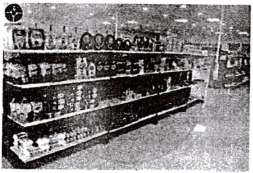Advertisements
Advertisements
प्रश्न
There are no substitute goods in a monopoly market. Give a reason to support your answer.
उत्तर १
- In a monopoly market, there are no substitute goods because the monopolist is the sole producer or provider of a unique product or service that no other firm offers.
- This absence of close substitutes means that consumers cannot switch to an alternative product if they find the monopolist's product too expensive or unsatisfactory.
- The monopolist's product is the only available option in the market, giving the monopolist significant control over pricing and market conditions.
- A monopoly's lack of competition from substitute goods is a defining feature, reinforcing the firm's dominant position in the market.
उत्तर २
The government may issue a license to a single producer to produce a specific commodity. As a result, a monopoly emerges. In addition, the government may elect to control the manufacture of specific items exclusively through departmental undertakings, such as India's railways. As a result, there are no close substitutes for the monopolistic product in the market. For example, there is no comparable 'bulk carrier' to railways.
संबंधित प्रश्न

The image above shows a departmental store of a market structure.
- Identify the form of market as observed from the above image.
- Discuss the features of this market form with respect to:
- Type of product
- Entry and exit of firms
- Selling cost
How is Perfect competitive market is different from a monopoly market?
'Homogeneous products' is a characteristic of ______.
The market structure which is characterised by a single producer of a commodity and when there are not close substitutes for that commodity:
What is meant by pure competition?
Give two characteristics of perfect competition.
Highlight the importance of selling costs in a monopolistically compatible market.
Identify the market form for the following:
Telecom industry in India.
State the market form of the following commodity.
Railways
Name the market in which there is a single buyer and many sellers.
Monopolistic competition is the perfect blending of monopoly and perfect competition. Explain.
Give two examples of monopolistically competitive market.
Why can a monopolist charge different prices in different markets?
What is the difference between perfect and imperfect oligopoly?
What does perfectly elastic demand curve faced by a competitive firm indicate?
In what respects does oligopoly differ from monopoly?
Identify the market form from the following:
A few large sellers
There are a large number of buyers and sellers under a ______ market.
Why an individual firm under perfect competition cannot influence the market price?
